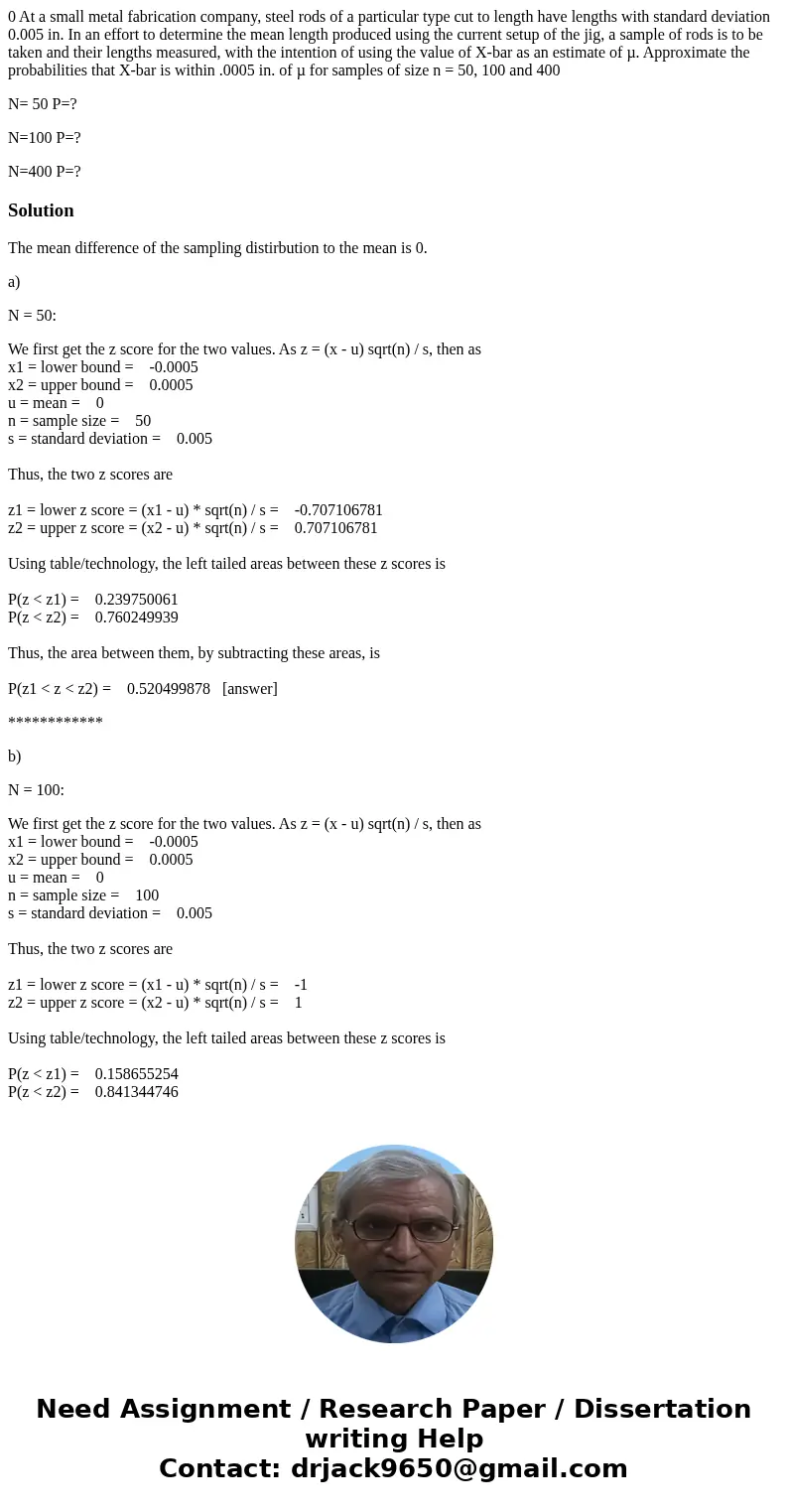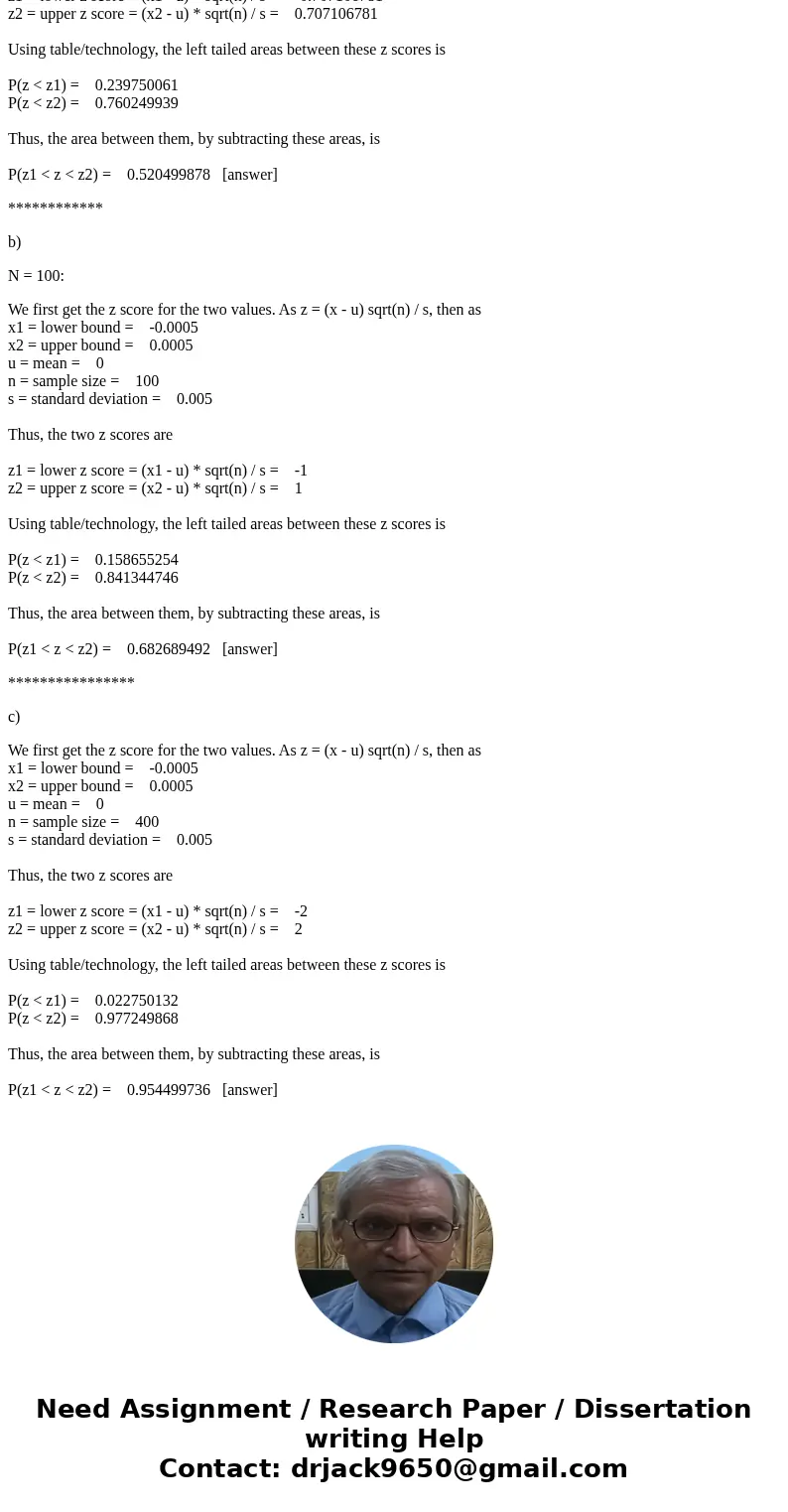0 At a small metal fabrication company steel rods of a parti
0 At a small metal fabrication company, steel rods of a particular type cut to length have lengths with standard deviation 0.005 in. In an effort to determine the mean length produced using the current setup of the jig, a sample of rods is to be taken and their lengths measured, with the intention of using the value of X-bar as an estimate of µ. Approximate the probabilities that X-bar is within .0005 in. of µ for samples of size n = 50, 100 and 400
N= 50 P=?
N=100 P=?
N=400 P=?
Solution
The mean difference of the sampling distirbution to the mean is 0.
a)
N = 50:
We first get the z score for the two values. As z = (x - u) sqrt(n) / s, then as
x1 = lower bound = -0.0005
x2 = upper bound = 0.0005
u = mean = 0
n = sample size = 50
s = standard deviation = 0.005
Thus, the two z scores are
z1 = lower z score = (x1 - u) * sqrt(n) / s = -0.707106781
z2 = upper z score = (x2 - u) * sqrt(n) / s = 0.707106781
Using table/technology, the left tailed areas between these z scores is
P(z < z1) = 0.239750061
P(z < z2) = 0.760249939
Thus, the area between them, by subtracting these areas, is
P(z1 < z < z2) = 0.520499878 [answer]
************
b)
N = 100:
We first get the z score for the two values. As z = (x - u) sqrt(n) / s, then as
x1 = lower bound = -0.0005
x2 = upper bound = 0.0005
u = mean = 0
n = sample size = 100
s = standard deviation = 0.005
Thus, the two z scores are
z1 = lower z score = (x1 - u) * sqrt(n) / s = -1
z2 = upper z score = (x2 - u) * sqrt(n) / s = 1
Using table/technology, the left tailed areas between these z scores is
P(z < z1) = 0.158655254
P(z < z2) = 0.841344746
Thus, the area between them, by subtracting these areas, is
P(z1 < z < z2) = 0.682689492 [answer]
****************
c)
We first get the z score for the two values. As z = (x - u) sqrt(n) / s, then as
x1 = lower bound = -0.0005
x2 = upper bound = 0.0005
u = mean = 0
n = sample size = 400
s = standard deviation = 0.005
Thus, the two z scores are
z1 = lower z score = (x1 - u) * sqrt(n) / s = -2
z2 = upper z score = (x2 - u) * sqrt(n) / s = 2
Using table/technology, the left tailed areas between these z scores is
P(z < z1) = 0.022750132
P(z < z2) = 0.977249868
Thus, the area between them, by subtracting these areas, is
P(z1 < z < z2) = 0.954499736 [answer]


 Homework Sourse
Homework Sourse